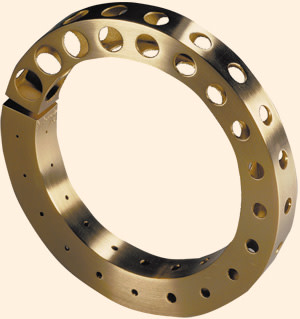‘Crossover’ jewellery attracts new collectors
Roula Khalaf, Editor of the FT, selects her favourite stories in this weekly newsletter.
A new breed of jewellery buyers is in search of pieces created by designers from the wider applied arts.
A recent Sotheby’s auction, where a design by Alexander Calder, the sculptor, sold for almost $2m and pioneering examples such as a jewellery collection for Tiffany & Co by Frank Gehry, the US-based architect, has alerted collectors to the appeal of crossover jewellery design – both for its form and investment potential, according to Louisa Guinness, a London-based dealer of jewellery created by 20th-century artists and designers.
“I am noticing a buzz now,” she says. “It is interesting and funky and cool jewellery, which is not trying to enhance the beauty of the person wearing it. It’s trying to say something.”
Since Ms Guinness started trading 10 years ago, she has watched a market develop for pieces by designers such as Ron Arad and Ross Lovegrove, who specialise in furniture.
Last year, her gallery exhibited at PAD (Pavilion of Art & Design) in London, at Art Basel and for the first time at Design Miami, where jewellery dealers, such as Brussels-based Caroline Van Hoek and US-based Mark McDonald, made up 15 per cent of galleries on show.
At Design Miami, a series of bracelets by Gijs Bakker fetched $37,000. The Dutch product designer and co-founder of Droog, the design house, was presented by Van Hoek.
At the first Collective event in New York, a fair selling vintage and contemporary furniture and design, jewellery was crucial to its broad appeal – attracting customers who then bought furniture, or vice versa, says Steven Learner, the event’s founder.
The result, says Ms Guinness, is a customer base different from that of conventional jewellery. “There’s increasing crossover between design and art fairs. I’ll get people coming in from Frieze [a London modern art fair] or Design Miami, and they won’t have heard of us. Then there are the collectors who are collecting jewellery just as they would art.”

The market has been boosted by Galerie Kreo, an influential Parisian gallery that has commissioned jewellery designs from Hella Jongerius, an industrial designer, Jaime Hayon, who specialises in interior design, and the Bouroullec brothers, who specialise in furniture.
“It’s an exclusive market,” says Didier Krzentowski, owner of Kreo. “We did not have the weight of advertising campaigns, or brand images, only an important designer or artist creating a piece for an exhibition. The ‘design jewellery’ market gives more freedom to creators and is therefore more interesting.”
Tomoko Azumi, a furniture designer based in London, agrees. Ms Azumi, who has created a collection of faceted silver jewellery for Terence Woodgate under his Eiger label, says her challenge was that “the function of jewellery is to express a character and feeling in something so small, rather than a practical function”.
While Eiger is concentrating on everyday pieces, Mr Woodgate hopes that limited editions will develop as his designers suggest ideas that cannot be developed using mainstream techniques.
Where is the value in such pieces? Arlène Bonnant, an art expert and director of Caspita – a new Swiss jewellery brand, which has Zaha Hadid, the architect, as its first art guest designer – says jewellery from a recognised design name is dependent on the value of that person’s oeuvre growing over their lifetime and beyond.
“For me, there’s only JAR [jewellery designer Joel Arthur Rosenthal] whose work has increased in value over his lifetime, but it is possible, especially if there is technological advance or something special about the work,” she says.
Johanna Flaum, a specialist auctioneer at Sotheby’s, adds that while the future value of such pieces is impossible to evaluate, “the market is finally recognising the finest artist jewellery as beautiful works of contemporary art as well as masterpieces of design”.
Comments